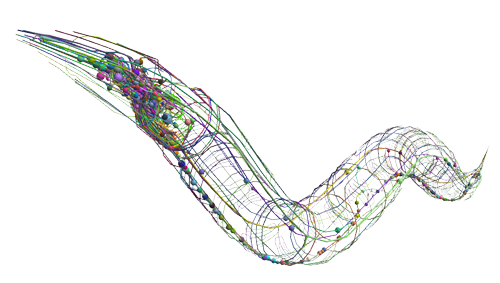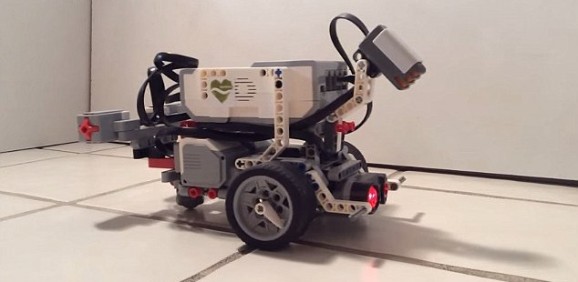What Happens When You Put A Worm’s Brain Inside A Robot?
This article is more than 2 years old
 Scientists and transhumanists such as Ray Kurzweil talk a lot about radical life extension and immortality, which they think can be achieved in a few different ways. One approach involves improving our physical bodies to the point that they’re pretty much immune to disease and aging, either through cellular and genetic manipulation or the use of nanotechnology that cleanses the body from the inside. Another method of achieving immortality involves ditching our biological bodies and uploading our brains into computers — not unlike the plot of Transcendence, but presumably with a lot less stupid evil. Anyway, the idea is that, eventually, we can all be body-less avatars flying around doing whatever we want, leaving these earthly trappings behind. Of course, that raises some pretty hefty questions, such as whether or not one’s avatar or virtual self is really that person, or if something’s lost in the translation. Given that it’s pretty tough to know for sure either way, scientists are trying to do more than simply speculate about this possible future. Thus, scientists wanted to start small — with a worm brain.
Scientists and transhumanists such as Ray Kurzweil talk a lot about radical life extension and immortality, which they think can be achieved in a few different ways. One approach involves improving our physical bodies to the point that they’re pretty much immune to disease and aging, either through cellular and genetic manipulation or the use of nanotechnology that cleanses the body from the inside. Another method of achieving immortality involves ditching our biological bodies and uploading our brains into computers — not unlike the plot of Transcendence, but presumably with a lot less stupid evil. Anyway, the idea is that, eventually, we can all be body-less avatars flying around doing whatever we want, leaving these earthly trappings behind. Of course, that raises some pretty hefty questions, such as whether or not one’s avatar or virtual self is really that person, or if something’s lost in the translation. Given that it’s pretty tough to know for sure either way, scientists are trying to do more than simply speculate about this possible future. Thus, scientists wanted to start small — with a worm brain.
This experiment is a product of OpenWorm, a project aiming to create the first virtual organism in a computer, which GFR reported on back in its Kickstarter days. It makes sense if you think about it — if we humans are ever going to understand our own crazy brains, a good place to start is with the brain of a worm. Thus, scientists took the nervous system of a C. elegans worm — a worm with 302 neurons in its connectome — and put it in a Lego Mindstorms EV3 robot. To do this, scientists had to build a simulation of a worm’s neural networks using software and sensors, as well as UDP packets (user datagram protocols, which are used in delivering time-sensitive messages exchanged by networked computers). The UDP packets activate sensory neurons, such as when a worm nears an object.

This project worked better than anticipated — the robot really acted like a worm. It stopped moving when something touched its nose, and it moved forward when it sensed food. OpenWorm co-founder Timothy Busbice said that, “Rather than just random, crazy movements by the robot, it actually responded to its environment in the same manner as the biological worm,” which demonstrates at least a basic understanding of how a worm’s brain and nervous system work. You can read more in-depth explanations of Busbice’s work here.
The video below demonstrates the project in action, though it’s a little difficult to remember that the robot is actually being “driven” by the brain of a worm. If you didn’t know that and just thought the thing was tooling around for fun, it would probably be less than exciting. But considering what the robot is, and what it represents, it’s pretty damn impressive, and a sign of things to come.












